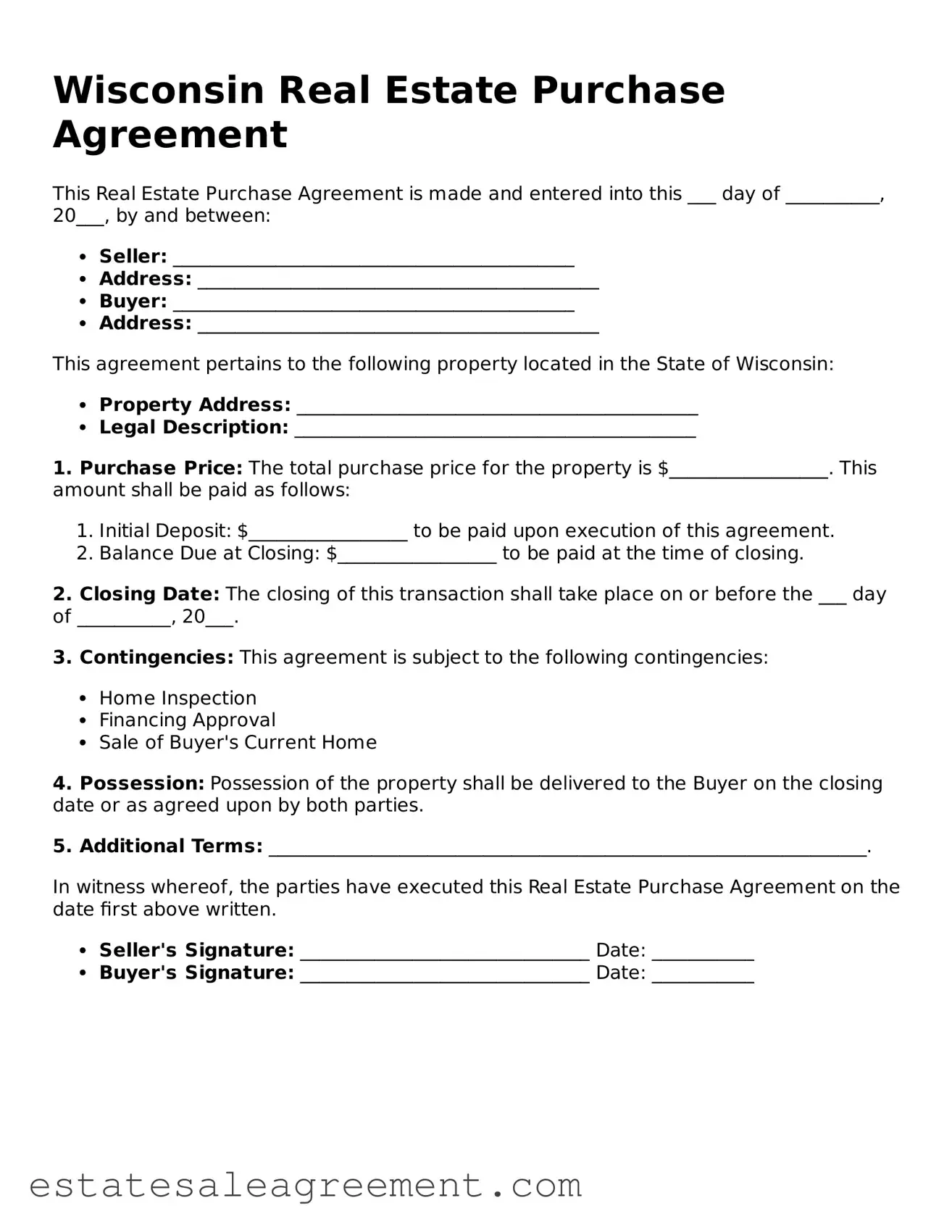Wisconsin Real Estate Purchase Agreement
This Real Estate Purchase Agreement is made and entered into this ___ day of __________, 20___, by and between:
- Seller: ___________________________________________
- Address: ___________________________________________
- Buyer: ___________________________________________
- Address: ___________________________________________
This agreement pertains to the following property located in the State of Wisconsin:
- Property Address: ___________________________________________
- Legal Description: ___________________________________________
1. Purchase Price: The total purchase price for the property is $_________________. This amount shall be paid as follows:
- Initial Deposit: $_________________ to be paid upon execution of this agreement.
- Balance Due at Closing: $_________________ to be paid at the time of closing.
2. Closing Date: The closing of this transaction shall take place on or before the ___ day of __________, 20___.
3. Contingencies: This agreement is subject to the following contingencies:
- Home Inspection
- Financing Approval
- Sale of Buyer's Current Home
4. Possession: Possession of the property shall be delivered to the Buyer on the closing date or as agreed upon by both parties.
5. Additional Terms: ________________________________________________________________.
In witness whereof, the parties have executed this Real Estate Purchase Agreement on the date first above written.
- Seller's Signature: _______________________________ Date: ___________
- Buyer's Signature: _______________________________ Date: ___________
